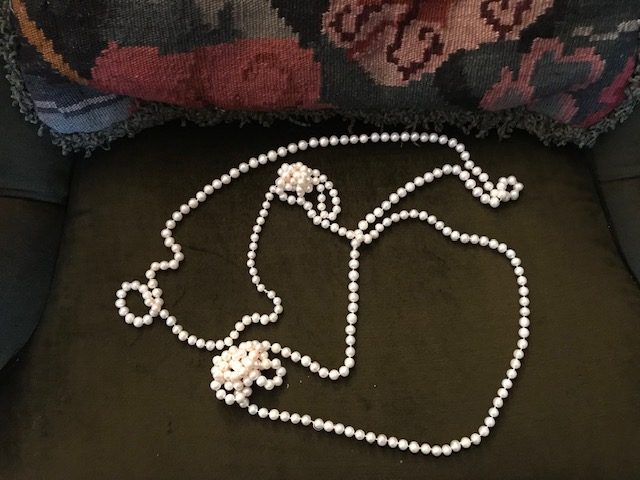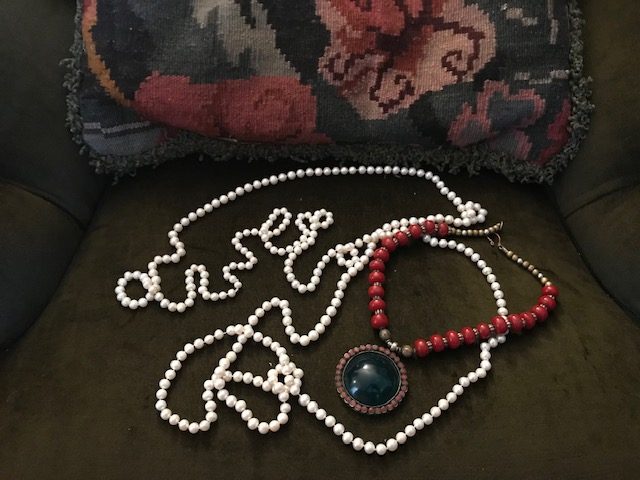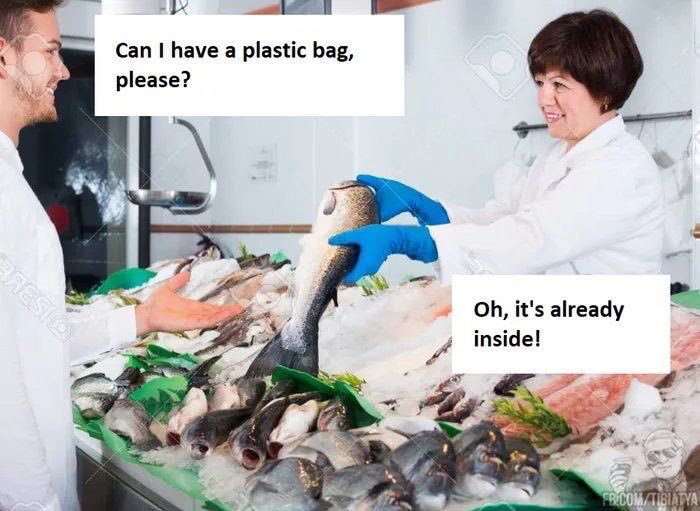Metaphysical decorating is about creating energy in our environments. One way we can do so is by touching and relating to the objects we love, giving and taking energy to and from them. The energy from these objects are also connected to others (the manufacturers, the suppliers of materials, those who have sold and resold them and finally all the former owners). So in connecting with our objects, we reach som many others. This lesson is about our relationship to our objects and the world. Our things connect us to other individuals, cultures and even to the spirit of the earth.
Lessons in Connecting
When I was in my 20s, I bought a lovely string of fake pearls in the neighboring Woolworth’s. They formed a twelve-foot loop that reached almost to the ground. If I doubled or tripled them or knotted them, I could wear them in a variety of styles. Still, I wished for a set of real pearls to wear in the same way! Twenty-five years later, when I visited China on an educational trip, the opportunity arose.

The tour leader took us to a pearl center where we all went gaga. I bought six smaller necklaces and asked if they could be restrung in one long necklace. I needed the necklace to have a protective double knot between each pearl. The salesman agreed and told me to come back “early tomorrow” to pick up the finished product.
The next morning I found a young woman finishing the last knots on my necklace. When I greeted her, she looked at me with sleep weary, dagger eyes. I knew then in an instant that she was up all night stringing my pearls.
My request put such strain on this young woman. I could feel the resulting negative energy when I touched the necklace. The Lakotas and other Native-Americans believe things made with love have lots of “skan.” They believe that this brings healing energy into our lives.[1] Yet the pearls had just the opposite – no skan and much negative energy.
Our Connections Affect Our Lives
Nonetheless, I put the necklace to its intended use and always wore them to a wedding or fancy party. One time, though, after two glasses of champagne and a few spins on the dance floor I simply wanted to rip them off. “They are just too heavy,” I said to my husband, “Here, you wear them.” I took them off and threw them around his neck, decorating his tuxedo, which turned into a running joke with our friends. Eventually, I put them in a drawer and never wore them again.
I have another piece of jewelry bought in Brussels at the Museum of the Congo with which I have quite a different relationship. The moment I touched it, I only felt love. Each time I wear it, I think about the artist. I always wondered if it was made for a loved one or as a commercial project? Each time I touch it, I send gratitude back to the artist, hoping no one lost out by giving up this beautiful object.
 Remembering the Lesson of the Pearls
Remembering the Lesson of the Pearls
How to Improve the Energy in Our Objects
At some point, a childhood friend brought up the pearls, remembering how often I wore them in my twenties. The plastic pearls were no longer around but it started me thinking about the almost forgotten Chinese pearls. Though I usually interact with all my objects, I truly abandoned this one.
Still, when I dug them out later and held them, I realized they still carried the negative energy of the young woman who tied close to 600 double knots. So I started relating to the pearls like I did to the African piece. I thought of the young woman with the tired eyes, and I told her I was grateful for the work., I would never have asked for the alteration had I known she would be forced to do this tedious work. When I vowed to be more sensitive to others in the future, the pearls began to feel lighter in my hands.
Objects Connect Us to Everyone in the Universe
The life force, that “energy without a word in the West” runs through all matter, including us. Its flow connects us to objects and the people who make them. Consequently, through our things, we are connected to everyone in the world.
The connection between people and objects is beautifully stated in The Fever. In this film, Vanessa Redgrave plays a wealthy middle-aged woman traveling to an imaginary third world country in Eastern Europe. Her initial intention is to just play the part of a tourist, but in a countryside ravaged by war and poverty, she experiences an existential awakening. The consequent fever she experiences becomes a metaphor for the raging reawakening churning inside of her. One day, she discovers an anonymous gift in a brown paper bag sitting on her doorstep. It was a copy of Das Capital by Karl Marx.
As she nurses her fever, she reads Marx’s expression of rage as he describes the coal workers, the child laborers, and all the other suffering workers. As she stumbles onto his “The Fetishism of Commodities” chapter, she realizes that to truly understand it, her whole life would have to change.
The Fever as Metaphor
In a feverish dream state she sees Marx’s ideas incorporated in the image of a coat:
… as if that coat, suddenly appearing on the earth, contained somewhere inside itself an amount of value, like an inner soul, as if the coat were a fetish, a physical object that contains a living spirit. What really determines the value of a coat? The coat’s price comes from its history, the history of all the people involved in making it and selling it and all the particular relationships they had…..
If we buy the coat, we, too, form relationships with all those people, and yet we hide those relationships from our own awareness by pretending we live in a world where coats have no history but just fall down from heaven with prices marked inside. “I like this coat,” we say, “It’s not expensive,” as if that were a fact about the coat and not the end of a story about all the people who made it and sold it. [2] [3]
So the fever takes the woman to a place that no one wants to be. It is a place where every object is examined for its effects on the world. The film’s tag line is Enlightenment Can Be Brutal, which is why it is so much easier to give up the material to get to the spiritual. Our relationship with objects can be hard; though beyond difficult, it is necessary. Such a step should, however, be taken slowly. Redgrave’s character couldn’t take the burst of enlightenment all at once. At some point, her fever of awareness broke and she went back to her old life, her eyes closed to an awareness she could not handle.
Objects Have a History with The Planet
There are some objects made from materials with a bad beginning and a bad end. No matter how much we hold them and talk to them, nothing can be done to bring them to energy. Plastic is one big example. Though I don’t deny it has had some lifesaving uses in medicine and unchallengeable protective functions in children’s car seats or bike helmets, plastic seems so dense to me that it cannot give or take any energy. It feels almost like an earthly black hole.
I hate the look of plastic. I hate being near it. So maybe I am just more comfortable with wood and metal, because like me, their mortality is guaranteed and in the same paradoxical wabi-sabi fashion, we will both age into the beauty of imperfection. Plastic, however, is almost immortal.

Plastic will remain years in a landfill for 1,000 years and intact or broken up into microplastics in our waters. It eventually degrades into nanoparticles, which are then incorporated into animal tissue, becoming part of our food chain. Depending on where we live globally and our particular habits, we can be swallowing a credit card’s weight in plastic every week. [4] [5] When we decorate for energy, we have to look at an object’s past and future, not just its present. Metaphysical decorating tells us that an object’s entire history affects us.
The Infinite Life and Destruction of Plastic
Elizabeth Royte describes the timeline of plastic as “Satan’s Resin” in her book, Garbage Land, On the Secret Trail of Trash [6]:
- ….plastic is toxic both to make and to dispose of. On the front end, said the EPA, the production of plastic emits the toxins trichloroethane, acetone, methylene chloride, methyl ethyl ketone, styrene, toluene, and 1, 1, 1 trichloroethane, as well as sulfur oxides, nitrous oxides, methanol, ethylene oxide, and volatile organic compounds.
***
- Plastic manufacturers use copious quantities of benzene and vinyl chloride, which are known to cause cancer in humans. Ingesting other ingredients of plastic production can lead to birth defects and damage the nervous system, blood, kidneys, and immune system.
****
- Many of these chemicals are gases and liquid hydrocarbons that readily vaporize and pollute the air. Many are flammable and explosive, and many can cause serious damage to ecosystems. In an EPA ranking of the twenty chemicals whose production generates the most total hazardous waste, five of the top six are chemicals commonly used by the plastics industry.
***
- Not surprisingly, plastic resin factories tend to be clustered in low-income communities of color (mostly in the Gulf States, which have easier access to gas lines). OSHA health studies have shown that people who work in and live near plants that manufacture plastics and the chemicals used to make them experience higher incidences of some kinds of cancer than other populations.
****
- At the end of their useful lives, plastic products that lie by the roadside or get buried in landfills can leach phthalates—which give plastic its softness and flexibility but have been linked with endocrine disruption—into groundwater. Burned in an incinerator, shampoo bottles, take-out containers, and bathtub mats release other toxins that escape smokestacks or are concentrated in bottom ash, which is eventually buried in landfills (unless it is combined with other materials and used in construction).
How to Handle Our Relationships With Objects
After having been given all this information, we might be at the point of screaming, running to the woods to live the simple life like Thoreau, limiting our outerwear to a sheet and sandals like Ghandi and giving up all the trappings of a materialistic life. Yes, it is easier to give up the material to find the spiritual, but in the end, it is not the door we are called to enter. We are meant to live in the world with all its negative trappings. We have to learn how to find our spiritual way by negotiating with the objects around us. This is the challenge we are called to in metaphysical decorating.
I do want us to go there gently, though. We cannot look at every object in our lives and ask who got hurt in the making. We would just come down with the fever and end up the same at the point of recovery.
One of the problems with capitalism is that it draws a curtain between our material possessions and their past, including the people who made them. Metaphysical decorating urges us to establish a relationship with our things and their history. Our possessions are not dead things but viable objects made to bring joy into our lives.
Opening Up the Curtain
We can gently ask who made the object we hold. Did they get a good wage and were their working conditions good? Did the manufacturer hurt the planet hurt in making the object? Perhaps we can research some products and send feedback to the corporations as well as send gratitude to the maker. We can apologize to the maker if they suffered in any way. That is what we want – all of our products made with love and if not so, to infuse love and gratitude into them with our entire being. We can ask ourselves if we paid more for the object, if the maker would get a better price. In metaphysical decorating, we are connected to every object and every person. If they are happier, so are we. This life force energy runs through all of us, animate and inanimate.
***
[1] Lance Hosey, The Shape of Green, Aesthetics, Ecology and Design (Washington DC: Island Press, 2012), p. 101.
[2] The Fever by Wallace Stevens.
[3} The Fever, produced by HBO films, 2004.
[4] “You Could Be Swallowing a Credit Card’s Weight in Plastic Every Week” (CNN. Com June 11, 2019).
[5]People who drink bottled water double their plastic ingestion.
[6] Elizabeth Royte, Garbage Land, On the Secret Trail of Trash (New York: Little, Brown and Company, 2005). Chapter Nine: “Satin’s Resin.”
***
There are two parts to this website, The Lessons, which are more difficult in concept, and the blogs, which are lighter in nature. A blog that you might enjoy with the same theme as Lesson Four is:
Please note that my website allows you to leave comments at the end of the blogs but not at the end of each lesson. If you have a comment or question about a lesson, you may email me at ruta@rutas-rules.com



